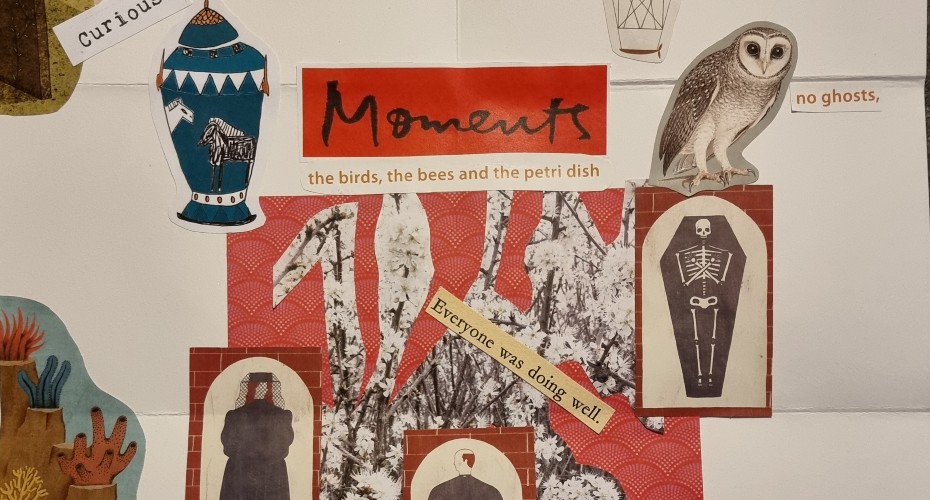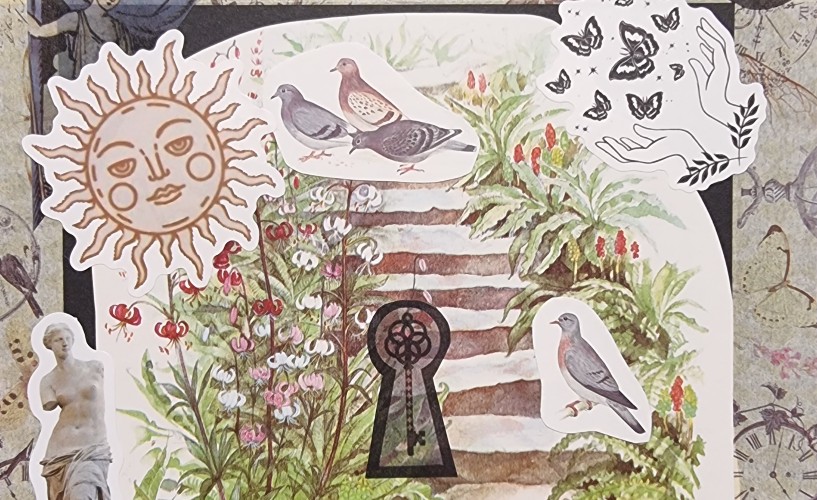Blog Post: Exploring creativity as a tool for improving wellbeing of students and host providers in Hospiscare
In the interests of improving mental health and overall wellbeing, organisations frequently provide students and staff with access to interventions such as meditation apps, yoga classes, and motivational speeches on, e.g., sleep, organisation, and resilience. Unfortunately, research consistently shows that these institution-wide initiatives often fall flat (Song and Baicker, 2019; Jones et al. 2021; Fleming 2024). A recent Guardian article on workplace wellbeing programmes bluntly summarises the crux of the problem: ‘It turns out the most effective way to improve employee mental health is by reducing stress, rather than adding new ways to cope with it’ (Spicer, 2024).
We agree that systemic, structural change is needed – but recognise that it will not happen immediately. In the meantime, we feel it is important to continue experimenting with practices that may provide some respite from stress, and perhaps reduce the likelihood of burnout. ‘We’, in this case, are researchers working at the interface of two disciplines where both students and staff consistently report low levels of wellbeing: education and healthcare (e.g., Singh et al., 2020).
Fortunately, in addition to being scholars and teachers, we are also artists. In our personal lives, we have found relaxation and peace of mind through activities such as jewellery-making, poetry-writing, and drawing. In engaging with these crafts, we have experienced not only temporary distraction from stress and anxiety – a benefit frequently associated with the mindfulness promoted by artistic endeavours (e.g., Beerse et al., 2010; Jones and Lee, 2022) – but also longer-term benefits to our mindset and mood, arising from the opportunity for reflection and catharsis (similar to patterns reported by, e.g., Lindsey et al., 2018).
Inspired by these first-hand experiences, we wondered whether it might be possible to collate a ‘creative toolkit’ comprising hand-picked activities that not only were evidence-based, but also had been vetted by fellow staff and students. One of us (MC) had already received positive feedback from students who had both viewed and created art in the context of a module on the history of nursing (see an online exhibition of their work here). Many of these students were initially sceptical about the role of art in their programme, and about their own abilities as artists, but their overwhelmingly enthusiastic response to the experience of creating exhibition pieces suggested that we might be on to something.

Thanks to funding support from both the Societies and Cultures Institute and the Education Incubator, we have been able to design and deliver dozens of Creative Toolkit sessions over the past year; additional support from the ESRC enabled us to host Creative Toolkit events for the public as part of the national Festival of Social Science. We adapt our sessions according to the needs and interests of our participants; some quick interventions may focus on only a single activity or medium (e.g., doodling), lasting no more than 30 minutes or so, while the longer events (our preference, for providing a more relaxing, immersive experience) may explore multiple techniques (e.g., collage, clay crafting, writing) over a half-day.
Planning and delivery of our sessions have been done in partnership with students, local palliative care staff, and artists. Together, we have explored whether and how different factors (e.g., group size, event length, type of activity) have influenced participants’ reports of enjoyment and relaxation. We have collected data on short-term responses to the events, and in the coming months we will be conducting follow-up conversations to explore longer-term impacts of attending our workshops. Preliminary results are promising; participants have provided feedback such as:
- ‘It was really valuable to get into the headspace of non-judgemental creativity’
- ‘…[it was] a “grounding” and “restorative” experience’
- ‘like [putting on] an oxygen mask before the plane goes down’
- ‘Amazing skills to use with patients, particularly those with psychological stress’
- ‘A good way to have a conversation with someone without the pressure’
Many attendees said that they enjoyed the workshops not only for the creative elements, but also for affording the opportunity to connect with others in the same session. As facilitators, we, too, had noticed the benefits of social connection (also noted by previous researchers – see Kansky and Diener, 2017). However, because participants almost unanimously reported significant scheduling constraints, we wanted to make the Creative Toolkit materials available 24-7; to this end, we are currently developing a webpage to host videos, instructions, and downloadables that can be accessed at any time.
An added benefit of the online Creative Toolkit is its flexibility and reach. We hope to continue working with new partners, developing new techniques, and collecting more data – all to ensure that those who engage with our materials can feel confident that their precious time will be well spent. Needless to say, we will also continue to champion institutional and societal changes that reduce stress and improve wellbeing. For now, however, we hope that the Creative Toolkit can contribute to providing the resilience that both we and our participants need (see Morris, 2022) to push for these changes while continuing to engage with daily demands.
Blog by Dr Caitlin Kight (PI, School of Education, HASS).




